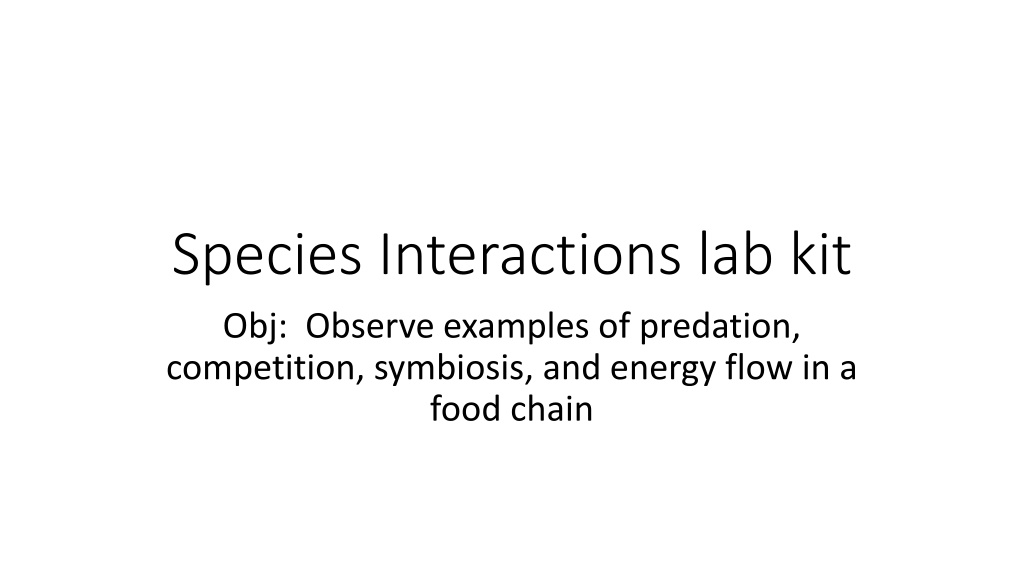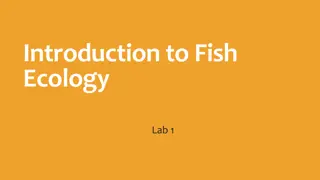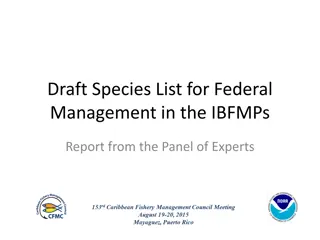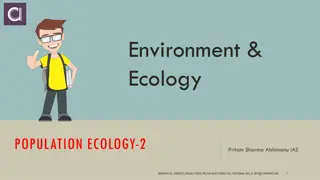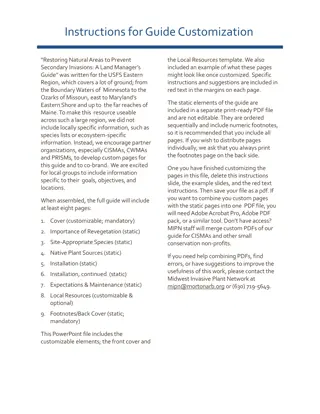Exploring Species Interactions in a Lab Setting
Discover examples of predation, competition, symbiosis, and energy flow in a food chain through interactive lab stations. From predator-prey relationships to mutualistic interactions, observe and learn about ecological dynamics in a hands-on environment.
Download Presentation

Please find below an Image/Link to download the presentation.
The content on the website is provided AS IS for your information and personal use only. It may not be sold, licensed, or shared on other websites without obtaining consent from the author. Download presentation by click this link. If you encounter any issues during the download, it is possible that the publisher has removed the file from their server.
E N D
Presentation Transcript
Species Interactions lab kit Obj: Observe examples of predation, competition, symbiosis, and energy flow in a food chain
Lab Station 1 Lab Station 1 Predator Predator- -prey relationship prey relationship Procedure: 2 petri dishes 2 pipets 2 microscopes 2 deep well (depression) slide 1. Add 1 drop of Stentor culture to the depression slide. Observe Stentor under 4X and then 10x Add 1 drop of Chilomonas solution to the same depression slide and observe what happens. 2. Organisms: Stentor Chilomonas Lab questions 1. Define predation 2. Describe the predator-prey relationship between Stentor and Chilomonas
Lab station 2 Lab station 2 Competition Competition Stentor culture Chilomonas culture Amoeba culture 2 depression slides 3 pipets Procedure: 1. Use a pipet to place 1 drop of Amoeba culture on your depression slide. Find under 4x and 10 x 2. Now add 1 drop of Chilomonas culture to the same depression slide. Do not let the tip of pipet touch the culture on slide. 3. After 2 minutes of observation now add 1 drop of Stentor to the depression slide. Observe the feeding behaviors of the organisms. Lab questions: 1. Compare the predatory behavior of Stentor to the predatory behavior of Amoeba. How are they similar? How are they different? 2. If Stentor & Amoeba were to share the same habitat with a limited population of Chilomonas, predict what would occur?
Lab Station 3 Lab Station 3 Symbiosis Symbiosis Termites Forceps Microscope slide Coverslip Procedure: 1. Use the forceps to GENTLY grasp a termite by the abdomen. 2. GENTLY apply pressure of the abdomen to the slide. The termite will excrete a drop or 2 of intestinal contents. 3. Cover the excreted material with a coverslip and observe under 4x and 10 x Lab questions: 1. Record your observations with a drawing 2. Describe what you observed when examining the termite gut under the microscope? 3. How is this relationship an example of mutualism?
Lab Station 4 Lab Station 4 Food chains and Energy Flow Food chains and Energy Flow Yeast solution dyed with Congo red Procedure: 1. Place a drop of 1 yeast solution on a depression slide. OBSERVE 2. Add a drop of Paramecium to the same depression slide. OBSERVE (does one species consume another?) 3. Add 1 drop of didinum to the depression slide. OBSERVE (does one species consume another?) Paramecium culture Didinium culture Depression slides 3 pipets Lab questions: 1. Draw a food chain incorporating the 3 organisms your observed. 2. Yeast feed on organic compounds. Would you consider yeast producers or consumers? Explain
